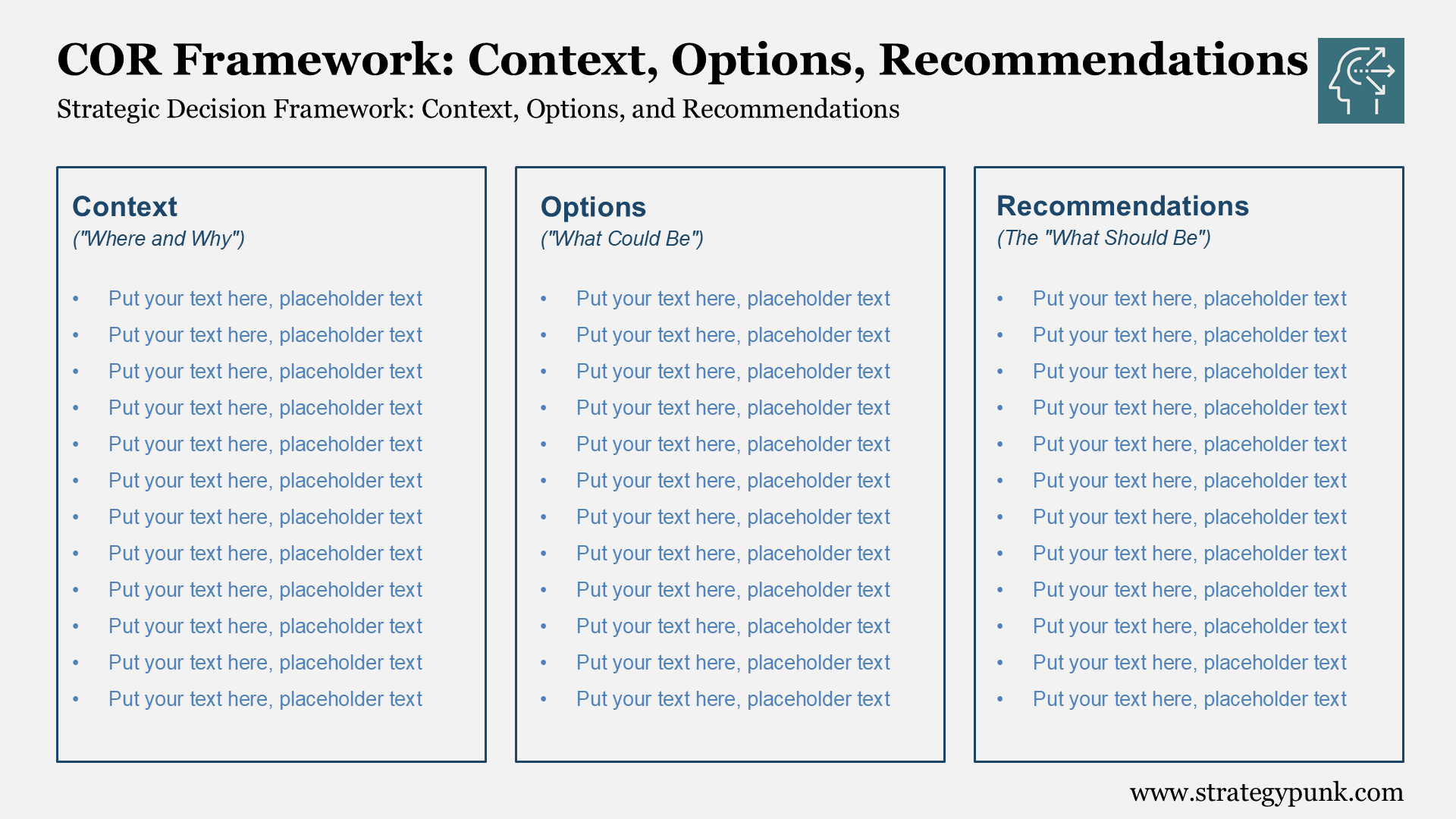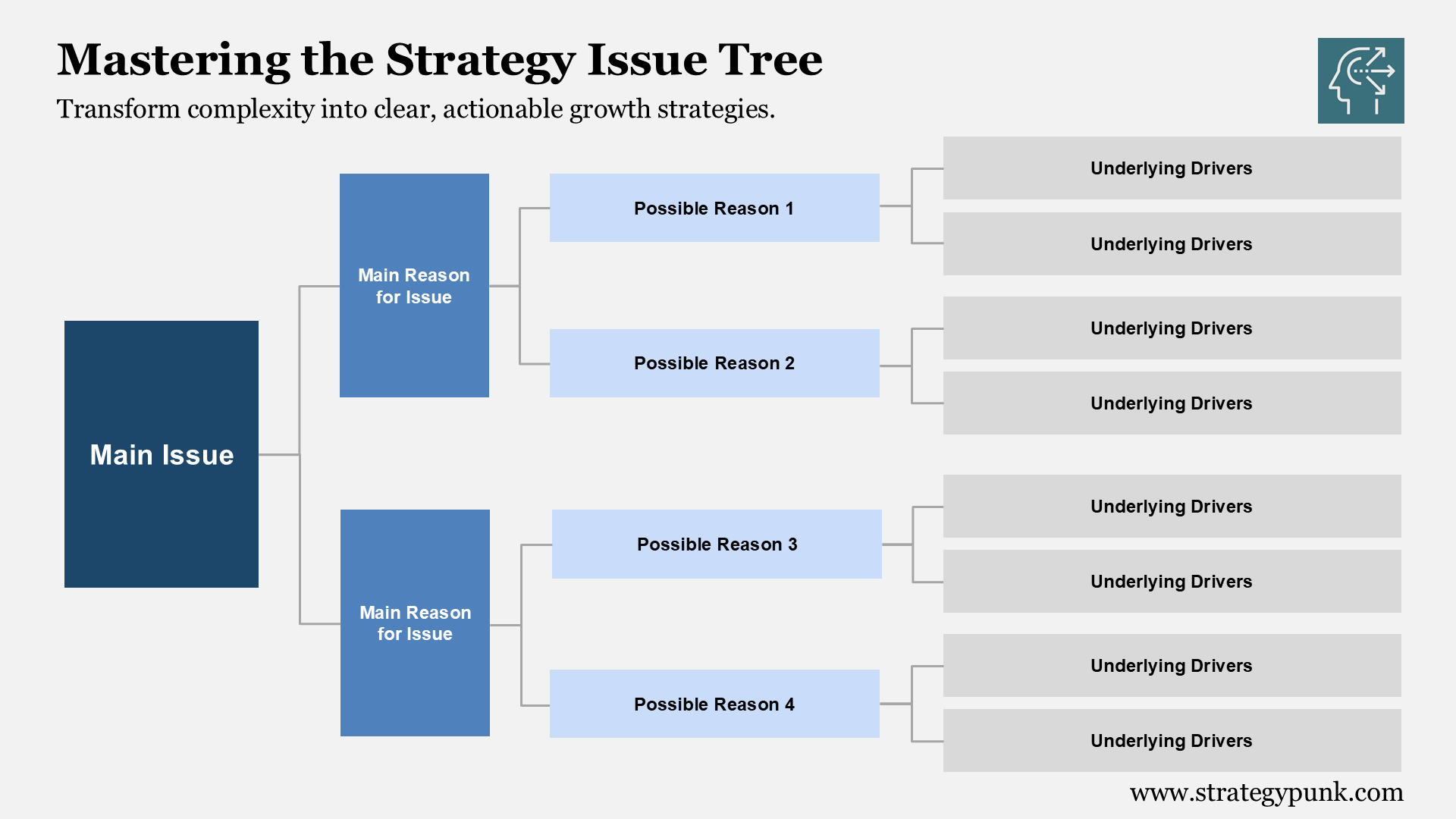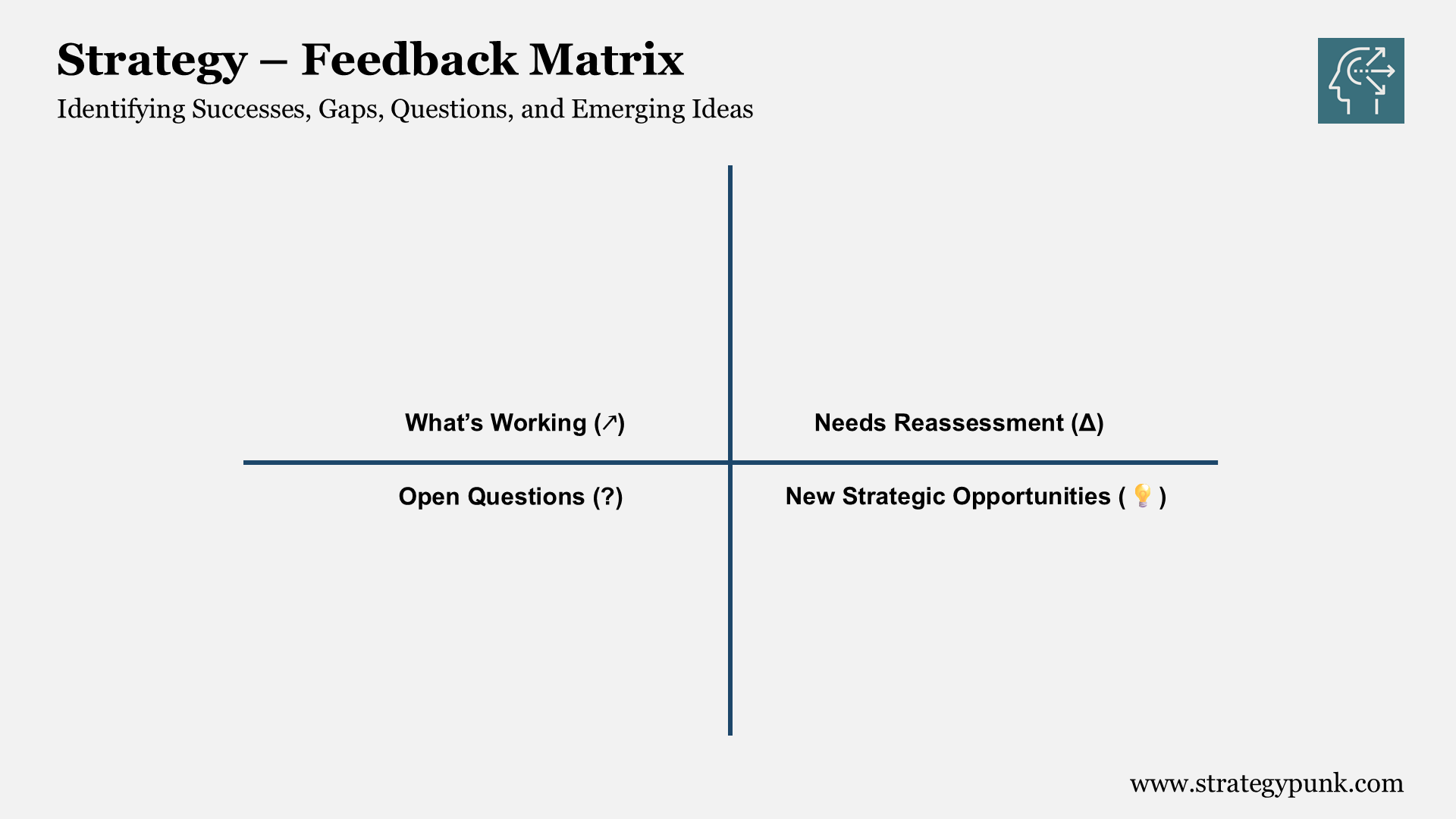Organize your tasks with the Eisenhower Matrix: Guide and FREE Template
Organize your tasks with the Eisenhower Matrix: Guide and FREE Template.

You have a lot of things to do, and it’s easy to feel overwhelmed. But you can tackle this challenge and finish your work by considering how essential and urgent each task is.
The Eisenhower Matrix, or the Urgency-and-Importance Matrix, can help you sort your tasks based on these two factors.
This article will introduce you to the Eisenhower Matrix and how to use it in your daily work routine.
You can use our FREE Eisenhower Matrix Template and guide to outline the action steps for the tasks that require your time and effort. Let’s get started!
What is the Eisenhower Matrix?
The Eisenhower Matrix, also known as the Urgency-and-Importance Matrix, is a method for sorting tasks based on their importance and urgency. Dwight D. Eisenhower developed the model and used it to make decisions as the Supreme Commander of Allied Forces.
This decision-making matrix has four quadrants, each of which has a label. To use the Eisenhower Matrix to your advantage, you must be familiar with all four quadrants. The four categories are as follows:
As you know, urgent tasks need to be taken care of quickly. These tasks are due within the next 24 hours or will have severe consequences if they are handled immediately. Eisenhower indicated that these tasks should be addressed immediately, regardless of the study's importance.
Importance is how a task affects the organization’s overall success. This is how a task contributes to the organization’s long-term goals. Urgent tasks are often unimportant, meaning they don’t contribute much to the organization's long-term goals. Important tasks are tasks that contribute to the organization’s long-term goals. An example of essential tasks is long-term projects or initiatives. Important tasks are tasks that keep the organization afloat. They can be either urgent or non-urgent. Critical and vital tasks require immediate action, regardless of how much they contribute to the organization's success.
What is the History of the Eisenhower Matrix?
Dwight D. Eisenhower developed the model and used it to make decisions as the Supreme Commander of the Allied Forces.
The Eisenhower Matrix is vital because it lets you prioritize your tasks based on their urgency and importance.
Eisenhower stressed the importance of identifying the nature of each task and choosing the right moment to tackle it. He believed that failing to do so would result in a loss of productivity. The Eisenhower Matrix helps determine the best moment to tackle a task because it allows you to rank each task according to its urgency and importance.
Over three decades later, in his best-selling book The 7 Habits of Highly Effective People, Stephen Covey bundled Eisenhower's insights into the Eisenhower Matrix, a simple tool for taking prioritization (also known as The Time Management Matrix, The Eisenhower Box, and The Urgent-Important Matrix).
How to use the Eisenhower Matrix
To use the Eisenhower Matrix, you must first create a list of all of your tasks. You can do this by looking at your To-do list and writing down each task on the "Task List" on the left side of the template.

Next, you must place each task in one of the four categories. You can ask yourself whether the job is urgent or essential.
Once you have placed each task in a category, you can sort your tasks based on their urgency and importance. You can do this by putting each task in one of the four quadrants of the Eisenhower Matrix.
Once you have completed this process, you can immediately focus on your most important tasks and tackle your urgent tasks.
The four quadrants of the Eisenhower Matrix
This Eisenhower decision-making matrix has four quadrants. The four categories are as follows:
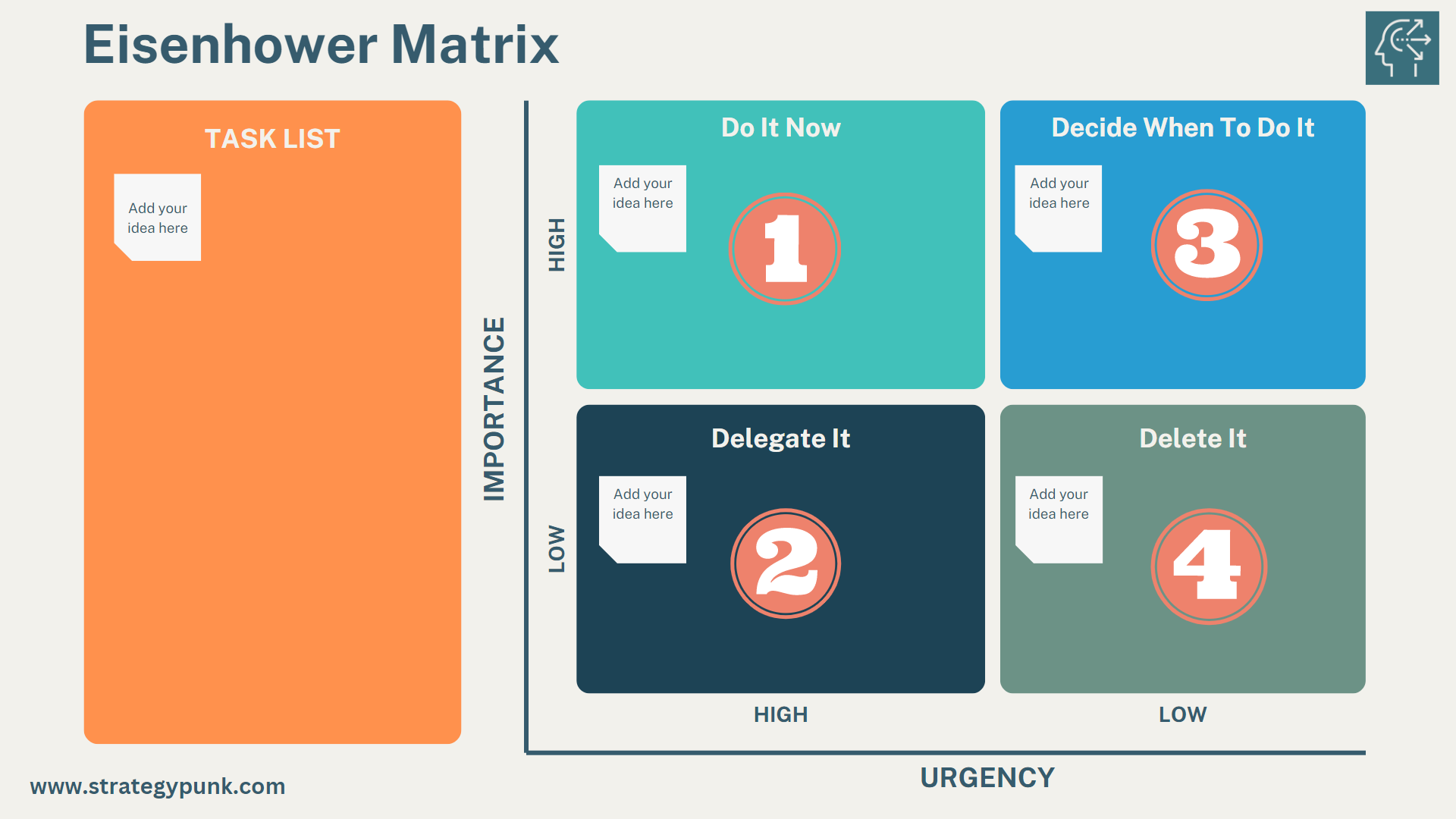
1) Urgent and essential: Do it right now! These tasks are time-sensitive and contribute to your overall objectives and goals.
2) Urgent but not necessary: Please make sure to delegate it! Could you delegate these tasks to someone else, ideally someone for whom they are important?
3) Important but not urgent: Decide when to do it! Decide when to attack them, but prioritize this quadrant at some point.
4) It is not important and not urgent. Delete it! These tasks distract from overall objectives and goals. Sometimes, they are necessary, but limit the time spent on them as much as possible.
Maximize Productivity: How Energy Management Enhances the Eisenhower Matrix
Let's face it: not all hours of the day are created equal when getting stuff done.
Do you know those important but not urgent tasks? The ones that need your brain firing on all cylinders? Yeah, those are best tackled when you're feeling sharp and focused.
Energy management is crucial when using the Eisenhower Matrix. Not all tasks are equally suited for every part of the day. Tasks that fall into the "Important and Not Urgent" quadrant often require deep focus and are best tackled when your energy is at its peak. Understanding your natural energy cycles can help you work on these high-priority tasks when you are most alert.
Conversely, tasks in the "Not Important" quadrants, especially those that can be delegated or minimized, are ideal for low energy. You can boost productivity without burning out by aligning your task types with your energy levels.
Finally, learning when to rest is just as vital. The Eisenhower Matrix isn't just about completing tasks—it's about doing them efficiently. Pay attention to how you feel after completing high-priority tasks, and ensure you build recovery time into your schedule. This will keep your productivity sustainable.
Boost Focus with Time-Blocking and the Eisenhower Matrix
Time-blocking can transform the Eisenhower Matrix into a dynamic tool for daily productivity.
After categorizing tasks into quadrants, assign specific time slots for each type of task based on its urgency and importance. For example, when your mind is fresh, you can block out focused hours for “Important but Not Urgent” tasks (Quadrant II) in the morning. Urgent tasks (Quadrant I) can be time-blocked to handle immediately, reducing stress. This method ensures you stay proactive, not reactive, allowing for controlled productivity throughout your day.
Time-blocking can help ensure less important tasks (Quadrants III and IV) don't drain valuable time. These can be slotted into shorter or low-energy periods of the day or delegated to others, freeing up your schedule for tasks that truly move the needle.
By pairing time-blocking with the Eisenhower Matrix, you're not just deciding what to do—you're deciding exactly when to do it, creating a structured approach that keeps you focused and efficient.
Eisenhower Matrix Template
You can categorize and prioritize your work with this Eisenhower Matrix Template.
With different layouts, this template helps you determine what's necessary and most important. Create your own Eisenhower Matrix to prioritize, divide, and conquer your tasks.




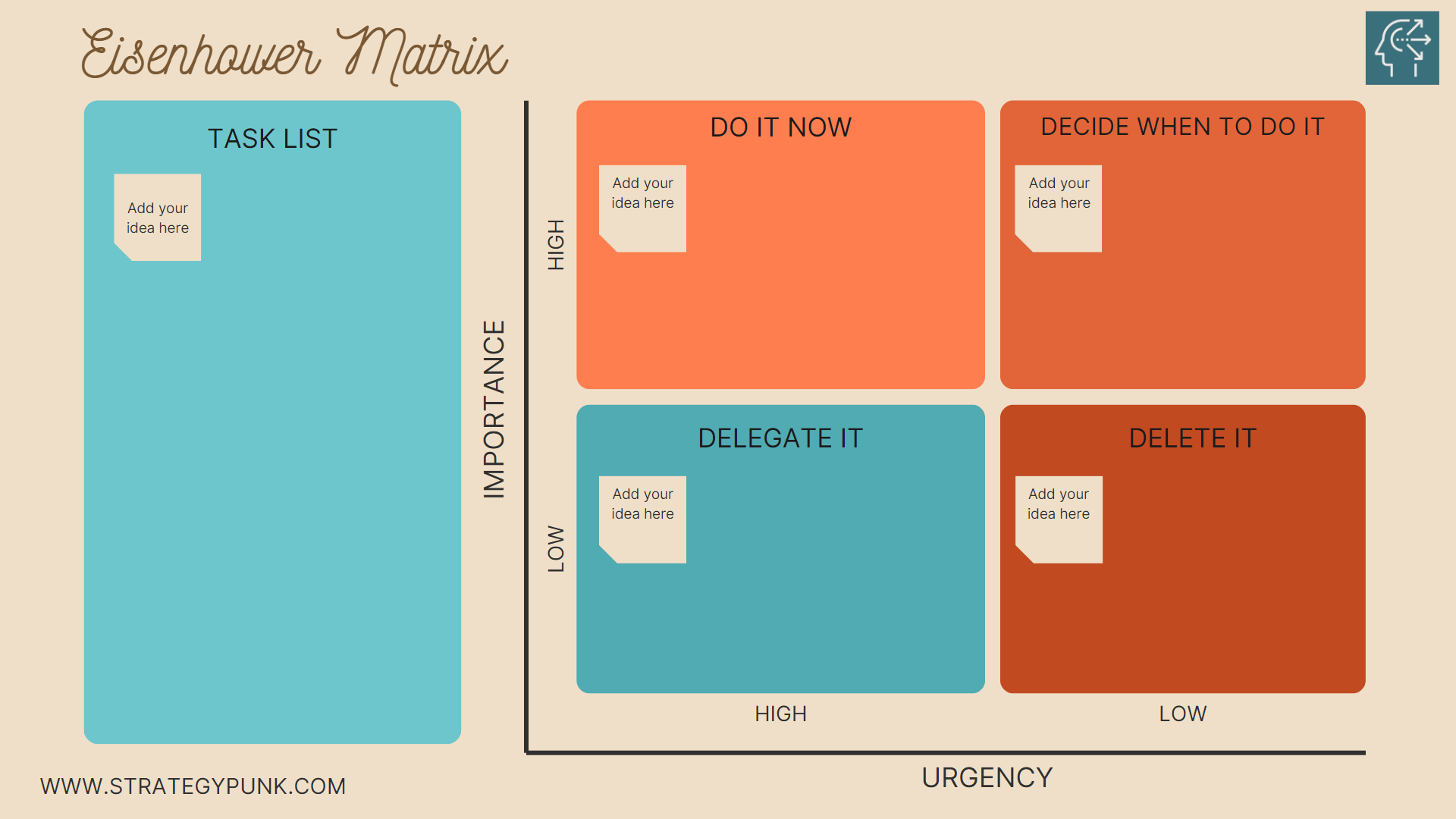

Eisenhower Matrix Template - 6 different layouts
Printable Eisenhower Matrix Template
The Eisenhower Matrix is a visual tool for determining which projects should receive the most attention in your business. It aims to help you prioritize the critical focus areas required for all projects.
Download the Eisenhower Matrix Template in PDF format to use a printable version. We recommend using an A3 or more significant form to have enough space to prioritize your tasks based on their urgency and importance.
Click-Worthy Links & Resources
Executive Project Status Report Template
Could you keep your Executive team updated and aligned?

STAR Method Template
Could you structure your tasks and challenges clearly: Situation, Task, Action, and Result?
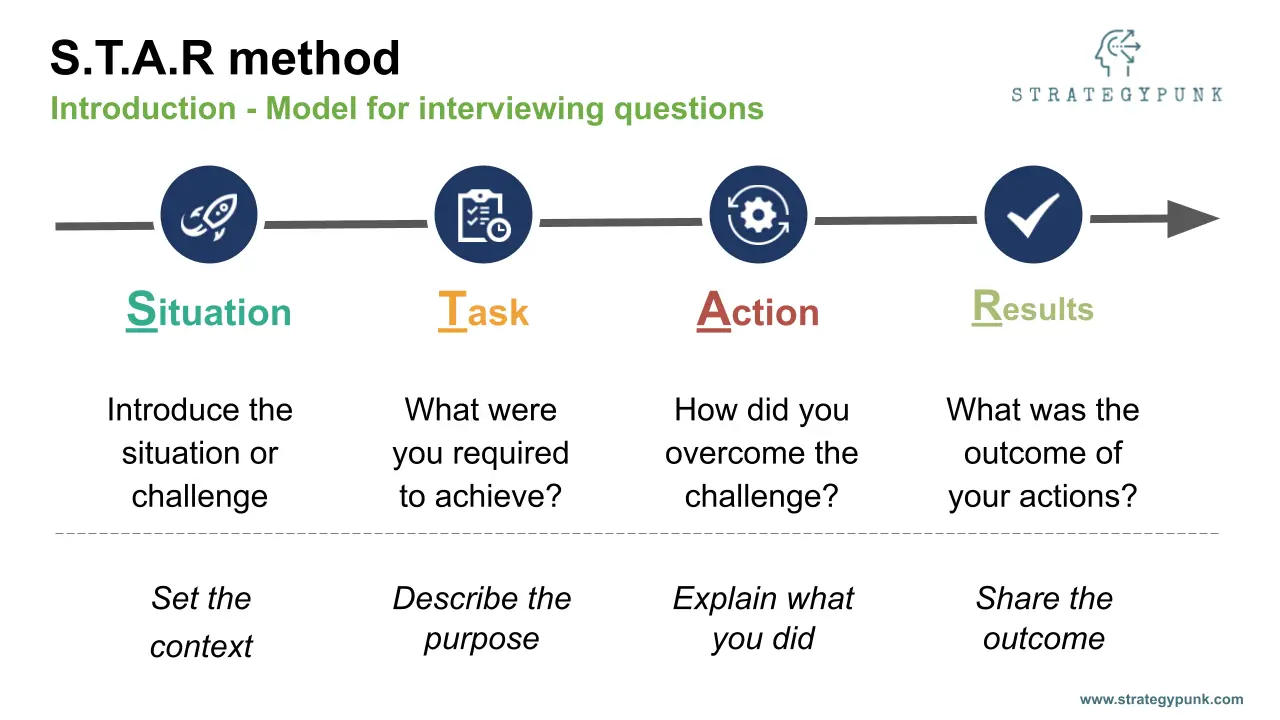
GROW Coaching Model
Coaching model to support your people to do their best





